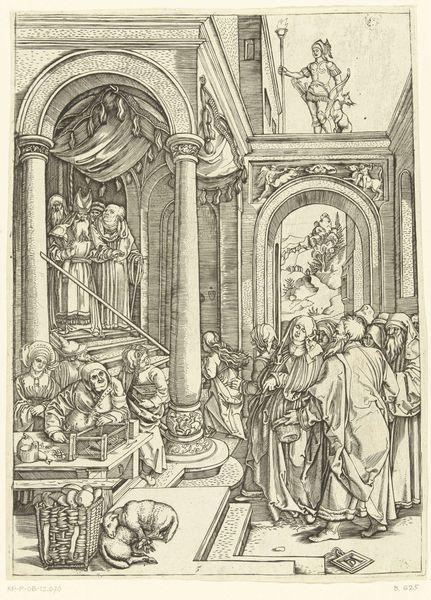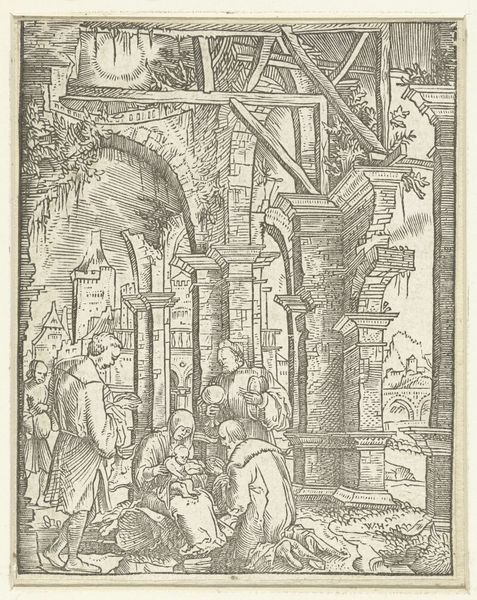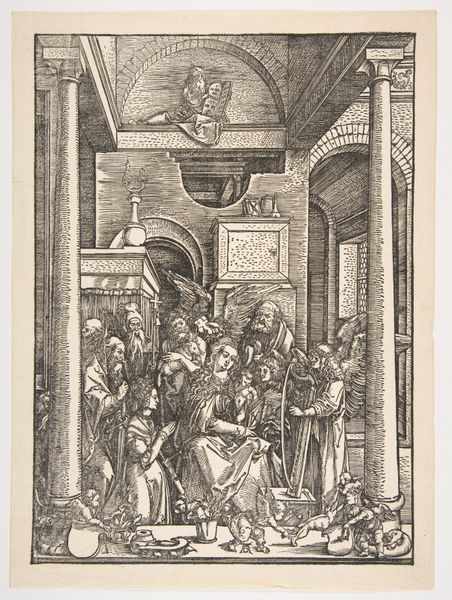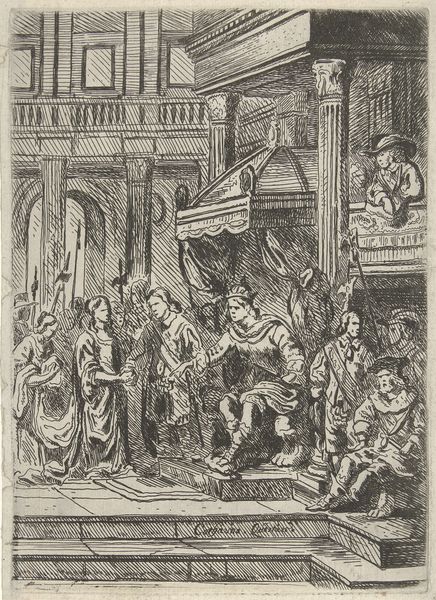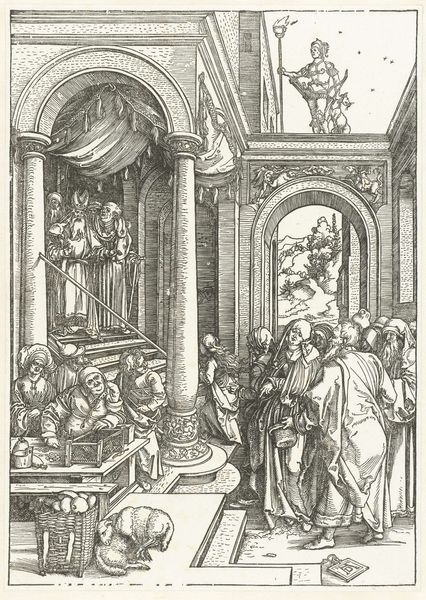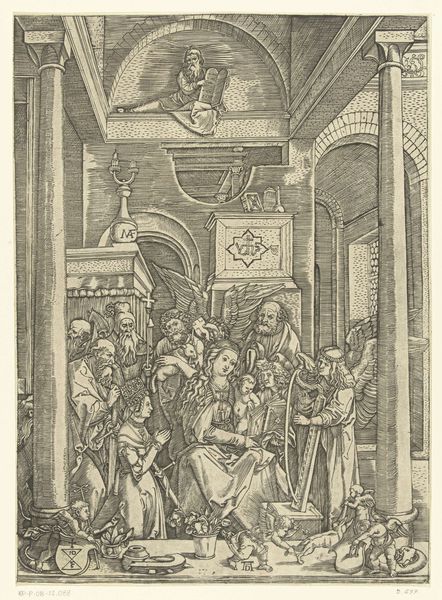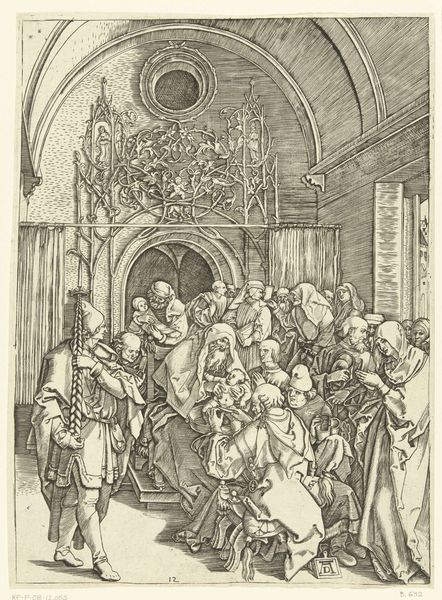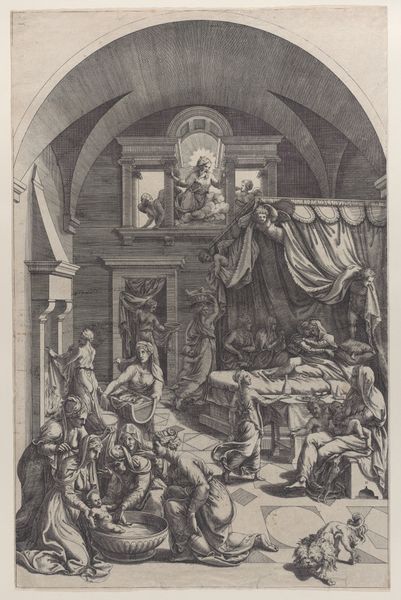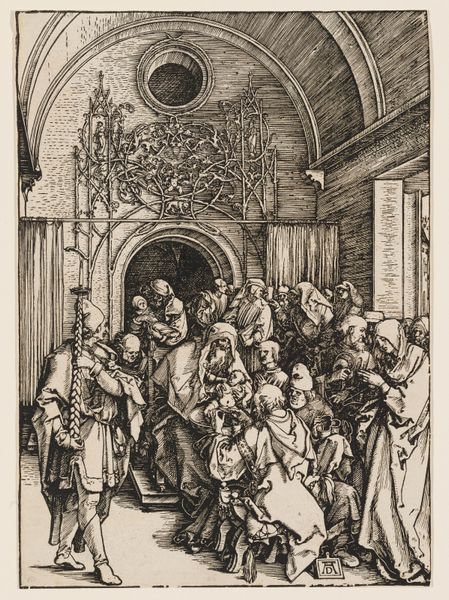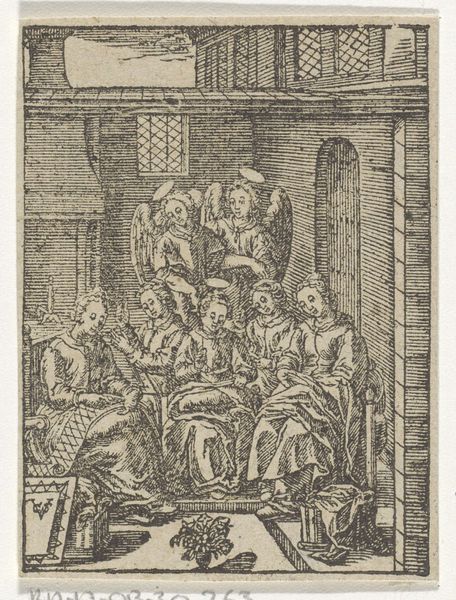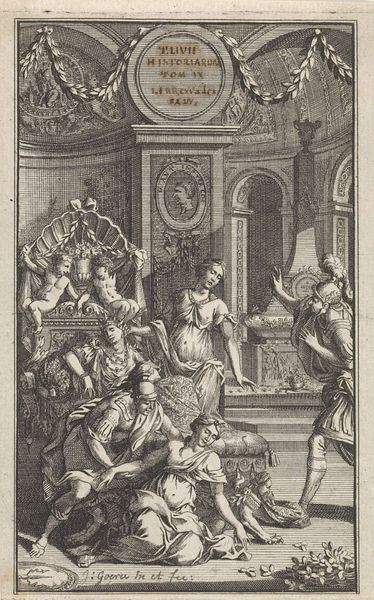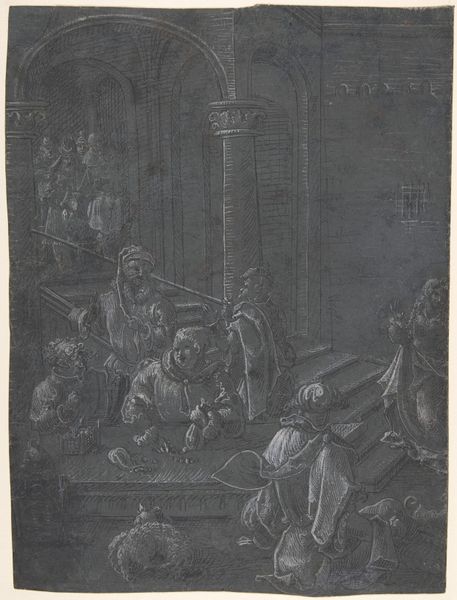
print, woodcut, engraving
#
medieval
# print
#
old engraving style
#
figuration
#
ink line art
#
woodcut
#
line
#
history-painting
#
northern-renaissance
#
engraving
Dimensions: height 119 mm, width 94 mm
Copyright: Rijks Museum: Open Domain
Curator: This intriguing print, attributed to Wolfgang Huber and dating between 1500 and 1537, is titled “The Circumcision of Christ.” It appears to be a woodcut or engraving, capturing a biblical scene with a remarkably detailed hand. What’s your first impression? Editor: Bleak. Honestly, my initial response is one of somber formality. It's an almost sterile portrayal of an intensely personal and, frankly, rather violent act. The architectural setting overwhelms the figures, creating a sense of emotional distance. The crispness of the lines almost enhances the harshness. Curator: Precisely! The use of line, typical of the Northern Renaissance style, does lend a certain severity. But consider how that linearity, repeated in the arches, the floor tiles, and even the folds of the clothing, reinforces a sense of order. The rite of circumcision is, after all, an initiation into a covenant, a social and spiritual structure. Editor: True. That formality emphasizes the weight of tradition and religious law. The composition really traps the viewer. Though the figures are dynamic, caught in various poses, they are framed—confined—by these strict architectural lines, implying that not even holiness can defy structure. Curator: Indeed. The architectural elements are far from mere background; the structure is imbued with symbolic value. Observe how the figures on the upper balcony oversee the act, echoing generations observing and passing on tradition. These ritualized performances are fundamental in defining cultural memory. Editor: So, we have cultural performance locked into place by hard line... the only truly curved space is a shell-like decoration far above, a womb shape presiding over what will one day symbolically refer to rebirth, if only this child survives the brutal cuts below! My reading suggests, perversely, a silent scream against tradition. Curator: It’s an interesting reading. Though one should note that Northern Renaissance art did tend to emphasize naturalism within the confines of traditional religious themes, not as a revolt from these, or as you described, screaming out against it. The emotions weren’t as openly displayed as, perhaps, the later Baroque style would allow. Editor: Maybe. But even the most stoic faces conceal inner worlds. This isn't merely a historical record—it is rife with complex feelings trapped inside these severe lines. What might feel archaic now may also reflect, perhaps even document, a fear of that loss of structure. Curator: A compelling interpretation, indeed. This woodcut presents an entry point to our understanding of religious, cultural, and artistic sensibilities of that age. Editor: Agreed! It might not shout, but the reverberations linger, like the echoes within those arches. It feels somehow both utterly ancient and still deeply present.
Comments
No comments
Be the first to comment and join the conversation on the ultimate creative platform.
